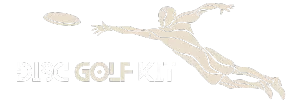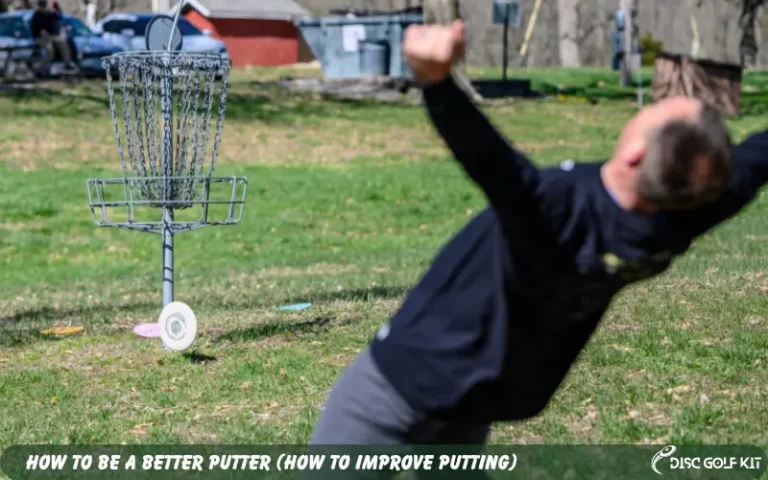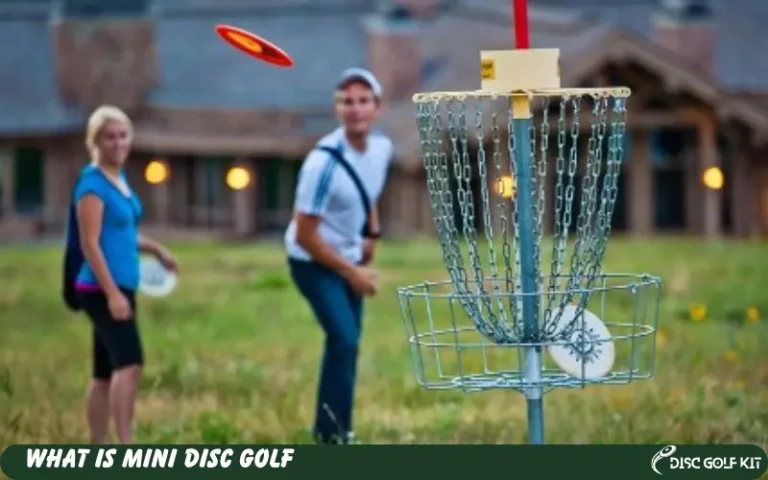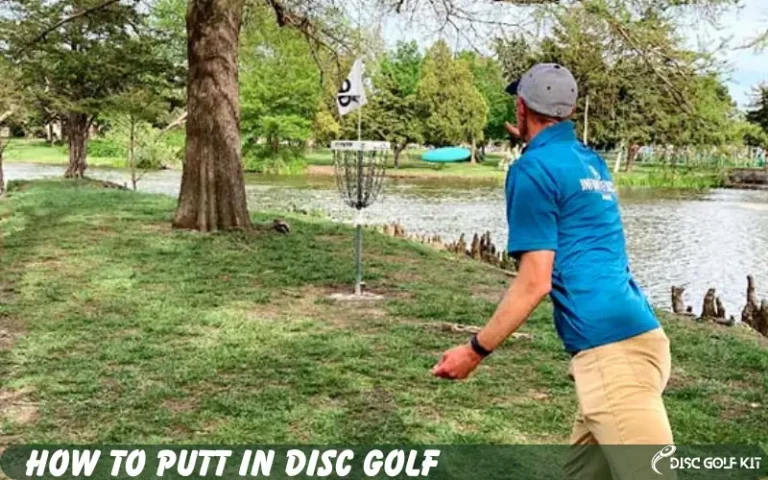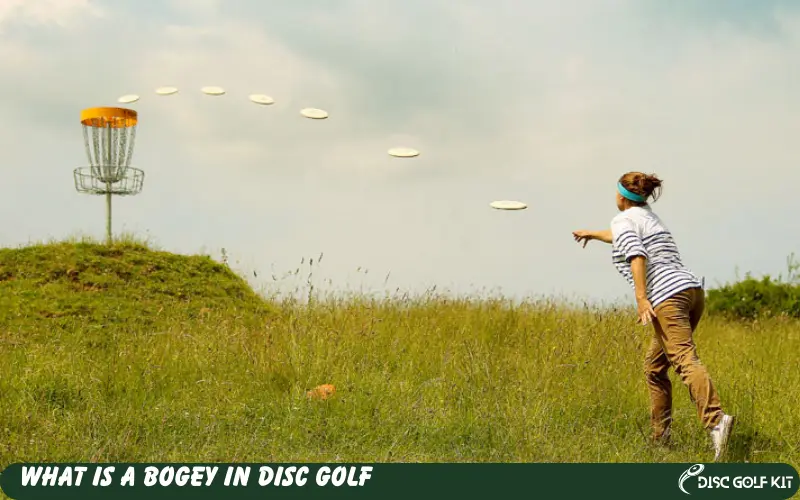
In disc golf, a bogey refers to a score on a specific hole that is one stroke over Par. Par is the predetermined number of throws an expert player must take to complete a hole. So, if a hole is designated as a par 3, and a player takes 4 throws to get their disc into the basket, they have scored a bogey on that hole. It signifies that the player struggled more than average on that particular hole.
To take it a step further, a double bogey in disc golf occurs when a player scores two strokes over Par on a hole. Understanding these terms is crucial for players as they aim to improve their skills and strive for lower scores in this exciting and challenging sport.
Disc golf has been soaring in popularity, transforming from a niche sport into a mainstream outdoor activity enjoyed by people of all ages. With its unique blend of strategy, skill, and outdoor adventure, it’s no wonder more individuals are flocking to the fairway. Yet, as you delve deeper into the sport, understanding its unique jargon becomes pivotal.
In this guide, we’ll unravel one term newcomers and veterans will encounter: What is a Bogey in Disc Golf? We’ll also delve into its variants, explaining what a Double Bogey means and how the term ‘Bogey’ impacts your gameplay and overall experience. Whether trying to master the basics or looking for ways to elevate your game, this comprehensive article will provide the necessary insights.
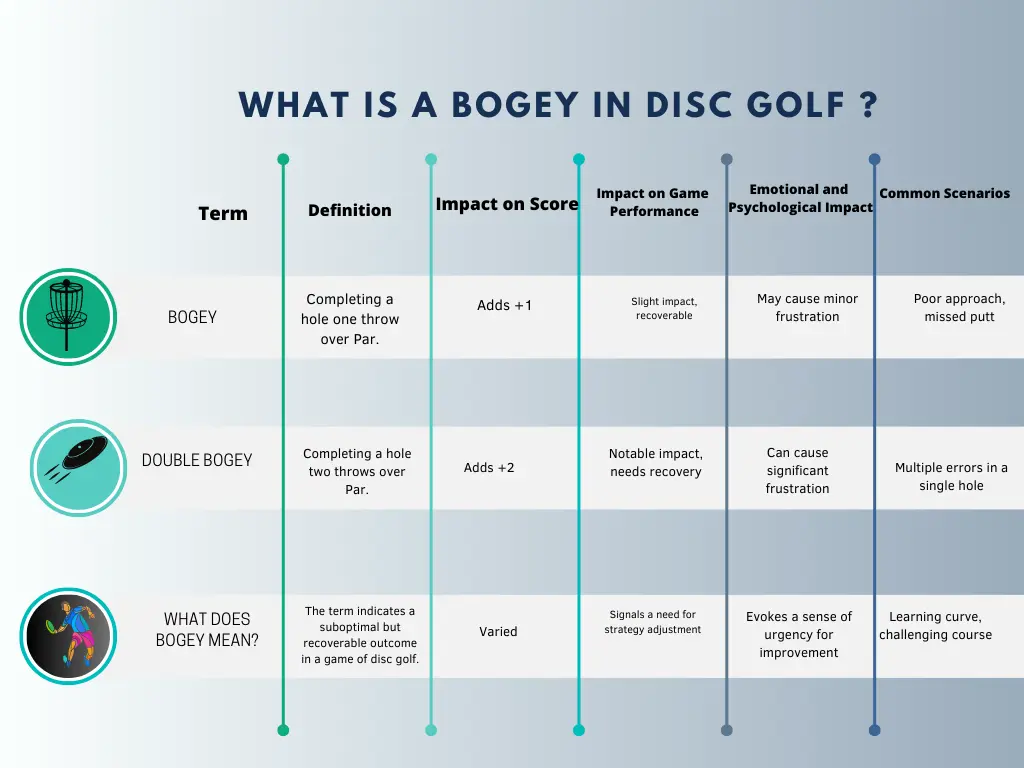
Introduction of What Is A Bogey In Disc Golf ?
Disc golf, a sport that blends elements of traditional golf with frisbee-like discs, is making waves in the sports community. No longer confined to the fringes, disc golf is breaking into the mainstream as more parks, schools, and districts install disc golf courses. Whether it’s the low-cost entry point or the addictive combination of athleticism and strategy, disc golf has become a go-to activity for people seeking outdoor recreation.
Importance of understanding the terminology in the sport
As in any sport, mastering the game’s lingo is crucial for understanding and excelling. Terms like “Par,” “Ace,” and “Birdie” not only describe specific outcomes on the course but also offer a glimpse into the game’s complexities. Knowing what these terms mean can be a game-changer for those aspiring to improve their skills or even compete. And that brings us to the topic we will focus on today: What is a Bogey in Disc Golf?
Basic Terminology in Disc Golf
Before we dive into the nuances of what a Bogey or Double Bogey means in disc golf, we must familiarize ourselves with some foundational terminology.
In disc golf, as in traditional golf, “Par” refers to the predetermined number of throws in which a disc golfer is expected to complete a hole. It serves as a benchmark for evaluating your performance on each hole.
“Ace,” on the other hand, is a term used to describe completing a hole in just one throw—a rare but exhilarating feat. Achieving an Ace is one of the ultimate accomplishments in the sport and often the highlight of a player’s career.
“Birdie” is used when a player completes a hole one throw under Par. This is seen as a strong performance that indicates your skill and strategy are paying off.
Transition into the focus of the article: What is a Bogey in Disc Golf
While acing a hole or landing a Birdie is the dream of every disc golfer, exploring the other end of the spectrum is crucial—entering the world of Bogey and Double Bogey. Just as Par, Birdie, and Ace help define excellence and success on the course, understanding what a Bogey and a Double Bogey mean can provide insights into areas of improvement and, in some cases, how to manage the psychological aspects of the game.
What Is A Bogey In Disc Golf
A Bogey in disc golf refers to completing a hole one throw over the predetermined Par. In simple terms, if the Par for a hole is 3 and you complete it in 4 throws, that’s a Bogey. It means you needed an extra throw compared to the standard expectation to get your disc into the basket.
How it Affects Your Game and Score
Achieving a Bogey directly impacts your overall score, pushing it upwards, which is generally not desirable in the game of disc golf. Consistently getting Bogeys can indicate weaknesses in your strategy or execution and distinguish between a winning and a mediocre performance. While a single Bogey might not seem like a big deal in isolation, it can add up over multiple holes and significantly affect your standing in a match or tournament.
Common Scenarios Where Bogeys Occur
Bogeys often occur when a player’s initial drive is inaccurate, landing the disc far from the optimal path toward the basket. They can also happen when a player cannot successfully navigate obstacles like trees, water hazards, or rough terrains, necessitating additional throws to get back on course. Poor putting can also result in a Bogey, especially if you miss a relatively straightforward putt and must take an extra throw to complete the hole. Understanding these common scenarios can provide valuable insights into what to avoid and what skills to work on improving.
By understanding what a Bogey means, its impact on your game, and the common scenarios where it occurs, you’re better equipped to make targeted improvements to your gameplay.
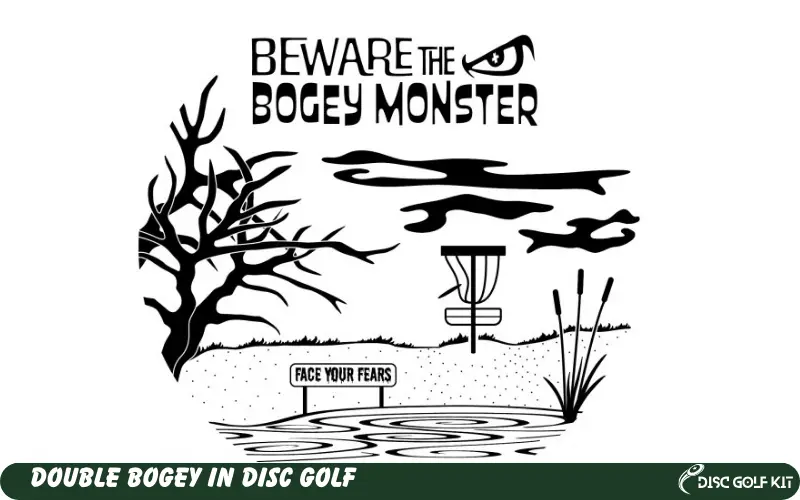
What Is A Double Bogey In Disc Golf
A Double Bogey in disc golf is when you complete a hole two throws over the predetermined Par. If the Par for a particular spot is 3, and you complete it in 5 throws, then you’ve earned yourself a Double Bogey. Unlike a Bogey, which is just one throw over Par, a Double Bogey pushes you two throws over, amplifying its impact on your overall score.
Impact on Your Overall Performance
The effects of a Double Bogey on your game are more severe than a single Bogey. In terms of score, it can set you back significantly and make recovering more challenging, especially in tight competitions. Double Bogeys can also have a psychological impact; they can demoralize and shake your confidence, affecting your performance on subsequent holes.
Typical Situations Leading to Double Bogeys
Double Bogeys usually result from mistakes or challenges on a hole. Whether it’s a poor drive that lands in a hazard, multiple failed attempts to navigate obstacles or several missed putts, the situations leading to Double Bogeys often involve compounded errors. Players might sometimes opt for a risky strategy to recover from a poor position, only to find themselves even further behind.
Understanding what a Double Bogey is, how it differs from a Bogey, and the situations that often lead to it can offer valuable insights. This knowledge can help you strategize better and prepare you mentally to bounce back if you ever find yourself facing a Double Bogey during a game.
What Does Bogey Mean In Disc Golf
While “Bogey” and “Double Bogey” have straightforward mathematical implications on your score, their emotional and psychological impacts can be substantial. Getting a Bogey or Double Bogey can be frustrating and demoralizing, potentially affecting your focus and performance on subsequent holes. Some players might even experience “tilt,” a term borrowed from poker to describe a state of emotional frustration that leads to poor decision-making.
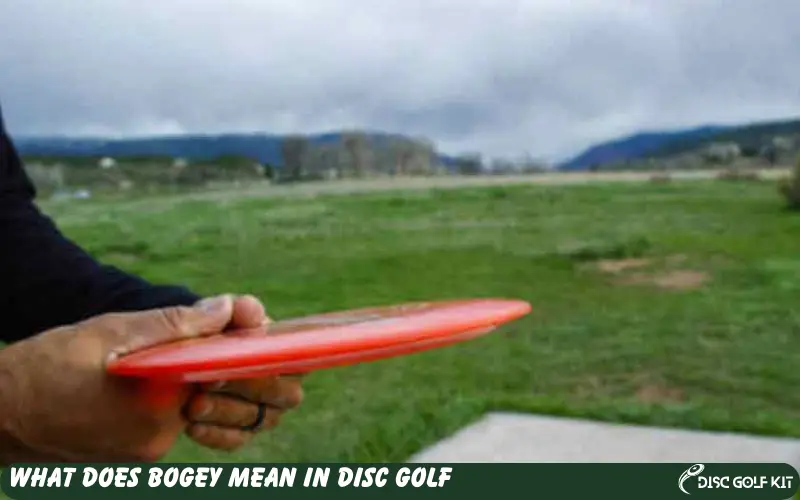
Strategies for Avoiding Bogeys
Avoiding Bogeys and Double Bogeys involves both physical skill and mental preparation. Here are some strategies:
The Cultural Context of the Term “Bogey” in the Disc Golf Community
The term “Bogey” carries a particular weight in the disc golf community. While it’s generally seen as undesirable, it’s also often viewed as an inevitable part of the learning curve. Even professional players get Bogeys and are usually open about discussing them as part of their journey toward improvement.
The term can sometimes have a lighthearted connotation, especially among recreational players. For example, some players jokingly refer to themselves as “Bogey golfers,” signifying that while they may not be at the top of their game, they’re still passionate about playing and improving.
Understanding what a Bogey truly means in disc golf involves more than just knowing its definition. It also includes understanding its emotional impact, learning strategies for avoidance, and appreciating its role in the game’s culture. This nuanced understanding can make you a more informed and potentially skilled disc golfer.
How to Recover from a Bogey or Double Bogey
Finding yourself in Bogey or Double Bogey territory can be frustrating, but recovery is crucial for your score and mental game. Here are some techniques to help you regain focus:
Quick Adjustments to Make in Your Strategy
By employing these tips and techniques, you can bounce back from a Bogey or Double Bogey more effectively. Recovery is an integral part of the game; knowing how to regain focus and adjust your strategy can make a substantial difference in your overall performance.
Case Studies
Case studies provide valuable insights into the real-world dynamics of encountering and overcoming Bogeys and Double Bogeys. Let’s look at some instances featuring amateur and professional players who have faced these challenges and bounced back successfully.
Conclusion
Understanding What Is A Bogey In Disc Golf and Double Bogey mean in disc golf is more than just a matter of terminology. These terms capture the essence of challenges, setbacks, and growth opportunities within the sport. As we’ve explored in this comprehensive guide, Bogeys and Double Bogeys are more than mere numbers on a scorecard; they can shape your strategy, influence your emotional state, and even define moments in your journey as a disc golfer.
Mastering this aspect of the game involves both technical proficiency and psychological resilience. It’s about learning how to recover from setbacks, adapt your strategy on the fly, and use every experience as a stepping stone for future improvement. Whether you’re a casual player or an aspiring pro, a clear understanding of these terms and how to navigate them can significantly impact your overall performance.
As you venture out on your next round of disc golf, armed with this newfound knowledge, remember that every throw offers a lesson, and every hole is a new opportunity. Keep aiming for those Pars and Birdies, but when you encounter a Bogey or Double Bogey, know you have the strategies and mental tools to bounce back.
FAQs

Written by
Declan Hodgson
Meet Declan Hodgson, your disc golf sherpa at DiscGolfKit.com. Navigating the twists and turns of the sport, I’m here to guide you through the world of discs, gear, and the pursuit of that perfect throw.
